How Long Does Vinyl Sidi...
- Mon to Fri: 09:00 am to 07:00 pm
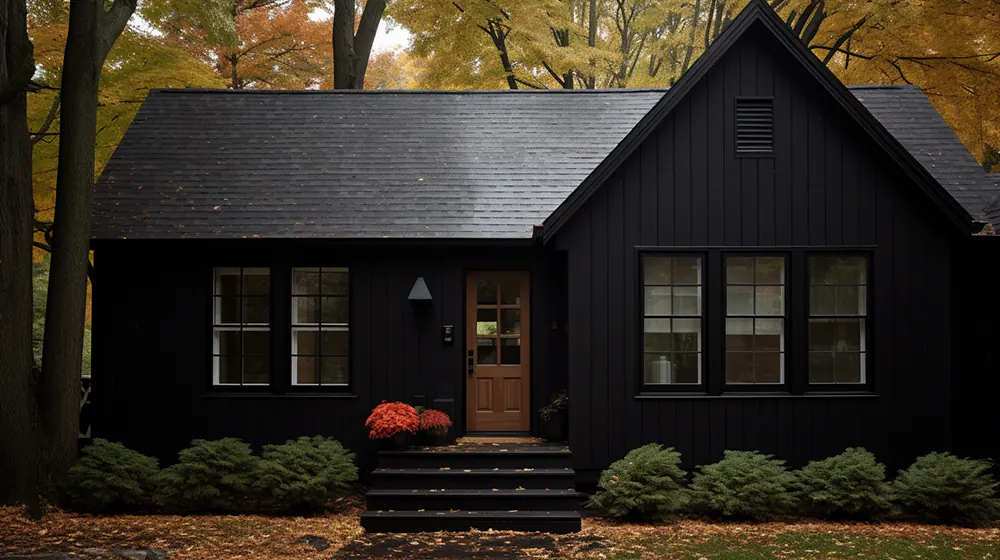
Black is bold. Black is dramatic. When done right, black, or a dark colored siding creates a striking aesthetic that can turn any ordinary home into a modern masterpiece. Welcome to our comprehensive blog post all about black siding houses. This architectural choice, while not for everyone, can command attention and instill a sense of awe.
Here, we will delve into the world of black and dark siding, from its aesthetic appeal to the practical considerations you need to know before taking the plunge into the dark side.
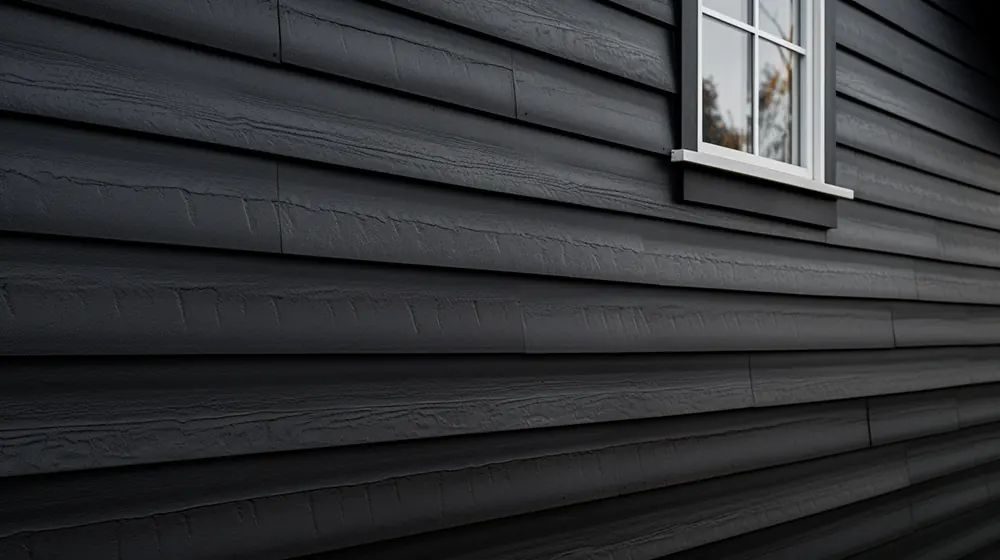
Black siding has been a rising trend in the architectural world, adored for its elegance and versatility. The dark hue provides a beautiful contrast to natural surroundings, making it a favorite choice for many modern homes. Its ability to make a bold statement and bring a sense of depth and sophistication to a structure is truly unmatched.
Moreover, black siding has been riding the wave of the minimalist trend, which champions simplicity and understatement. In an era where less is more, black siding offers an aesthetic that is impactful and stylish, yet delightfully simple.
This modern, minimalist appeal has led to its growing popularity, with more and more homeowners choosing to take the bold step into the world of black siding.
While black siding may be visually stunning, it’s important to understand the practical considerations before committing to this bold design choice. Here are a few things to keep in mind with your siding:
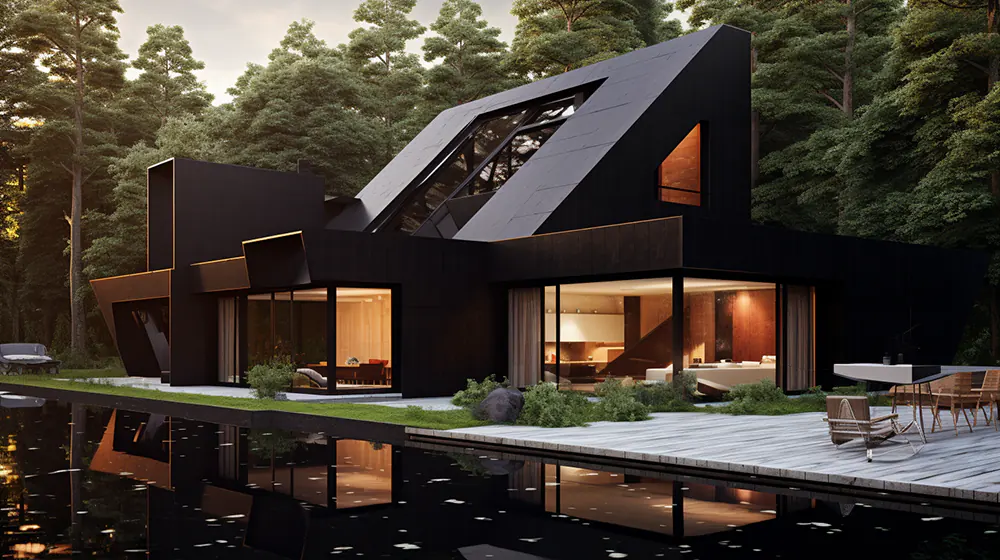
Black attracts more sunlight and thereby, more heat. This can be a significant factor to consider if you live in an area with a high average temperature. Higher levels of heat absorption can lead to more significant stress on your air conditioning systems, potentially leading to higher energy consumption and bills. This can also lead to more wear and tear on the siding itself, reducing its lifespan. This is a big factor to concider when concidering the lifespan of vinal siding.
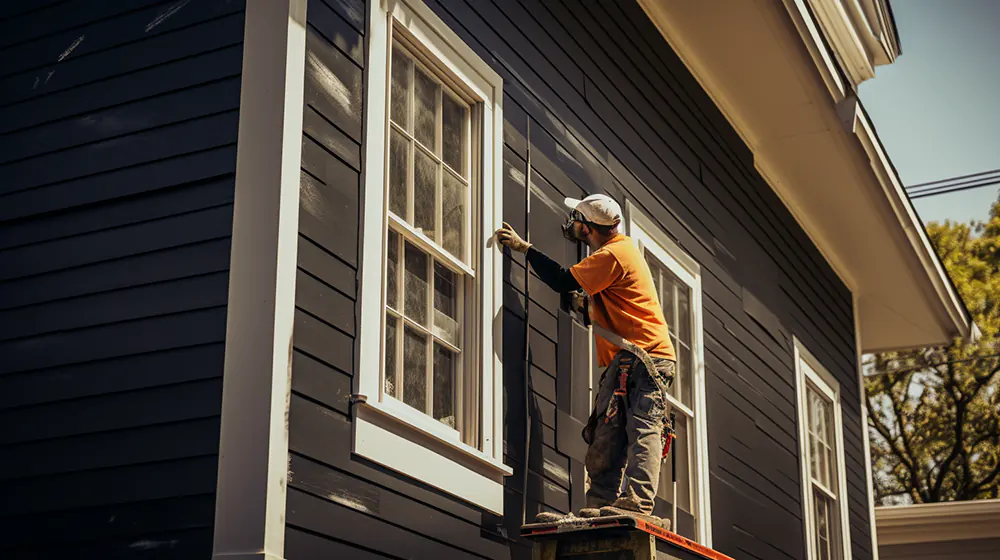
Black siding, while strikingly beautiful, can show dust, dirt, and water stains more readily than lighter colors. This means you may need to commit to more regular cleaning and maintenance to keep your home looking its best. In areas with a high amount of rainfall or dust, this can be a significant factor to consider.
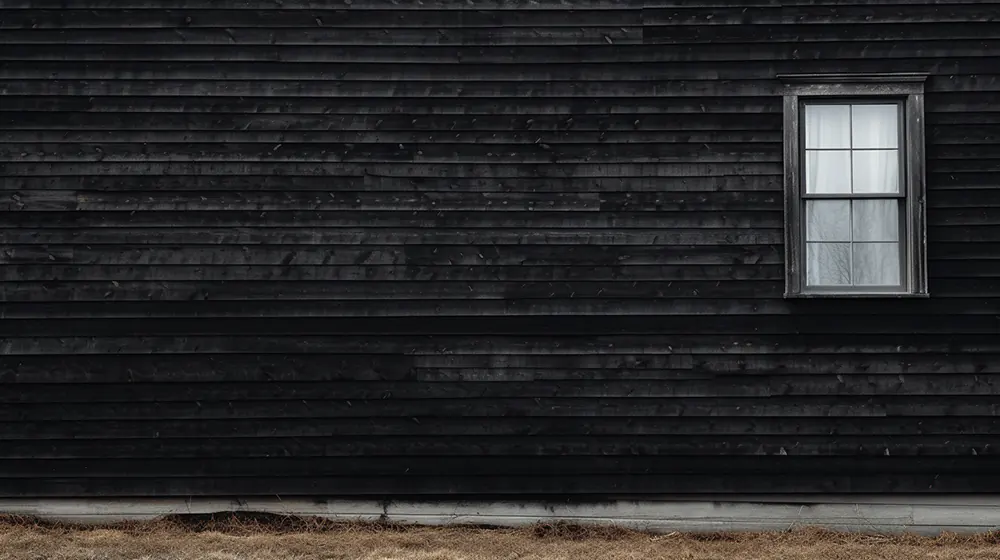
All colors fade over time when exposed to the elements, but this can be especially noticeable with black siding. The dark color can start to look washed out or dull over the years. To keep the bold, dramatic look, you may need to plan for periodic repainting of the siding or refinishing, another maintenance consideration to keep in mind.
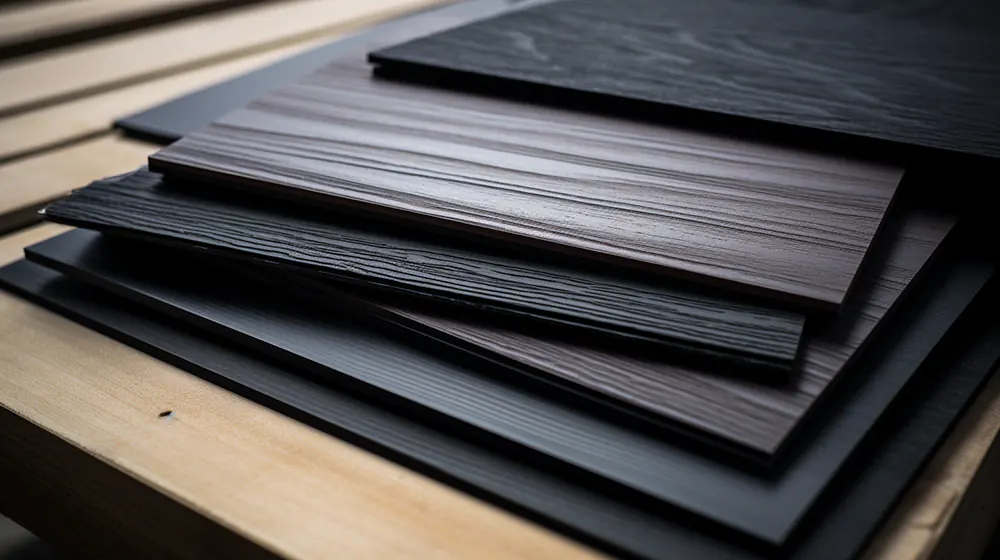
Not all siding materials are available in black or are suitable for dark colors. For example, vinyl siding or board and batten can warp or buckle under high heat, a risk that increases with dark colors. Make sure you research and choose a material that can not only offer the look you desire but also stand up to the practicalities of your home’s location and climate.
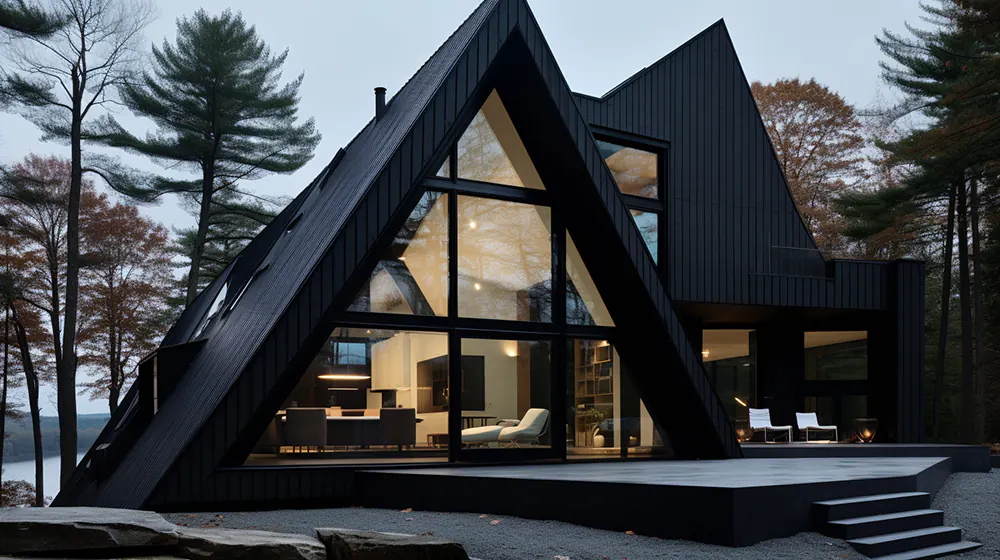
Black siding gives a bold, modern look that may not mesh well with all architectural styles. While it can make a strong statement, it could also potentially clash with the style of your neighbors’ homes or the general aesthetics of your community. For those looking to make a bold statement without being too daring, a unique front door color or black trim contrasted against white siding or neutral colors could also have a similar, albeit smaller effect.
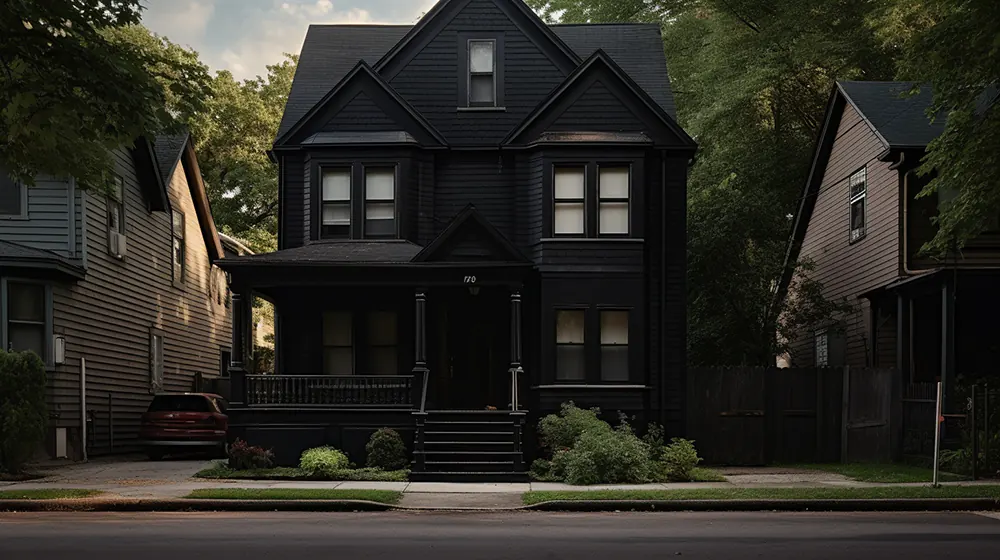
Another important factor to consider is any neighborhood restrictions that may limit your choices for your home’s exterior design. Some communities have strict rules and guidelines in place regarding the color, material, and overall appearance of homes. Before diving into a black siding project and hiring a professional, make sure you check with your homeowner’s association or local authorities to ensure that it is allowed.
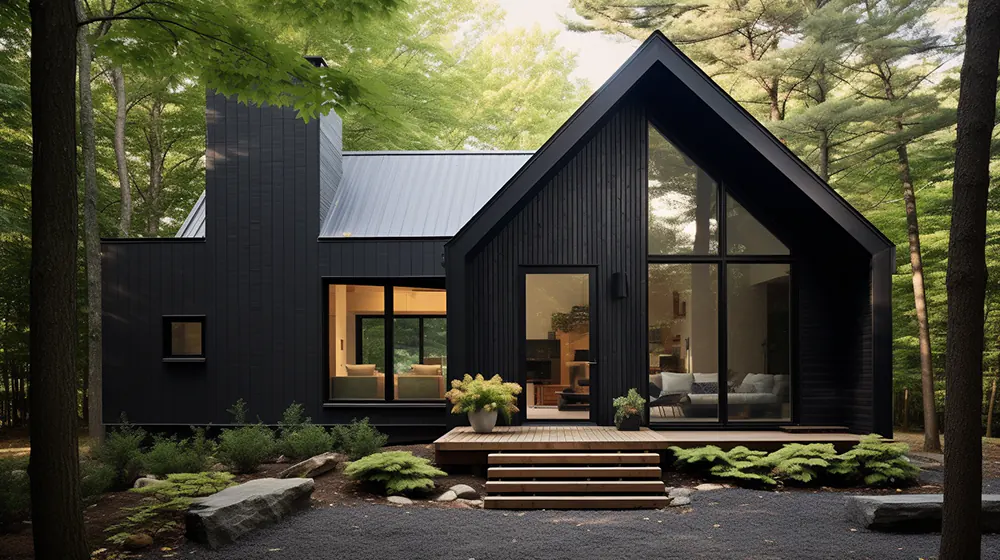
As with any design choice, there are potential disadvantages to consider before opting for black siding. These include:
Black siding materials can sometimes be more expensive than lighter colors. The higher cost of black siding materials primarily results from the specialized pigments and treatments required to create and maintain the bold, dark color.
Black pigments are more expensive to manufacture, and black siding often requires additional UV inhibitors to prevent the color from fading over time.
As mentioned earlier, black siding may require more frequent cleaning and maintenance to keep it looking its best. Check out our blog What is the Best Vinyl Sidng Cleaner for an in indepth answer on what supplies we recommend you use to clean your siding.
While black may be a versatile and impactful color, it may not work well with all accents or trim colors. This can limit your options for exterior home décor.
Again, due to the nature of dark colors, black siding may require more frequent repainting or refinishing to maintain its bold look.

While it’s true that black absorbs more sunlight than lighter colors, this doesn’t necessarily mean your black-sided home will be unbearably hot. Much depends on the construction materials used and the quality of your insulation.
Furthermore, choosing a black siding or black windows with good reflective properties can help offset some of the heat absorption.
Cleaning black siding is essentially the same process as cleaning any other siding, although the frequency may be higher due to its tendency to show dust and dirt. A straightforward mix of water and mild detergent, combined with a soft brush or a power washer at a low setting, will keep your black siding looking its best.
The rate at which black siding fades can depend on several factors, including the quality of the siding material and paint, as well as the intensity and duration of sun exposure. High-quality siding materials and paint colors with UV protection can significantly slow the fading process.
The color of the siding doesn’t typically influence the price to much. The cost is more likely to be impacted by the type of material you choose, installation costs, and potential maintenance and energy efficiency considerations.
The best material for black siding depends on your specific needs and environment. For instance, while vinyl might not be the best choice due to its susceptibility to warping in high heat, materials like fiber-cement, metal siding, or engineered wood siding could be suitable alternatives.
While black siding has the potential to show dust, dirt, and water stains more readily than on a wood surface, it doesn’t inherently require more maintenance. High-quality materials and proper installation can help minimize the amount of upkeep required.
Absolutely, but there are a few considerations to keep in mind. You need to ensure the existing siding such as vinyl is suitable for painting and is in good condition. Furthermore, the type of paint used is critical. Opt for a high-quality paint with UV protection to maintain the vibrancy of the black color for a longer period. Luckily, most companies offer many different black colors for their siding, like James Hardie’s “Dream Collection” offering of colors.
Black siding can certainly make your home stand out and appeal to potential buyers who appreciate its modern, bold aesthetic.
However, keep in mind that it may not appeal to everyone. The impact on home value will largely depend on your local real estate market and buyer preferences.
Black siding lends itself best to modern, contemporary architectural styles. However, with the right design approach, it can be used to striking effect on a variety of home styles.
It’s always best to consult with a design professional to explore if black siding is right for your home.
Black siding can be used in a wide range of climates. However, in particularly hot areas, it’s essential to consider the potential for increased heat absorption. This can be mitigated to some extent through the choice of siding material and the use of reflective or insulating features.
Black siding can be a bold and eye-catching choice for home exteriors. However, it requires careful consideration of factors such as climate, maintenance, and neighborhood restrictions before moving forward with the project.
With the right material selection and design approach, black siding can add both aesthetic value and curb appeal to your home. We hope this guide has provided you with valuable insights to make an informed decision about whether black siding is the right choice for you.
We hope this blog has been helpfull in your decision making. If you have any questions always feel free to reach out to us by giving us a call, email, or contacting us directlyon our site. Our team of experts would love to help answer any more questions or concerns you may have about siding or window instalation, repair, or maintenance.